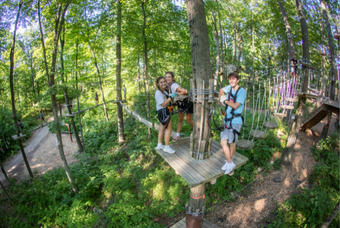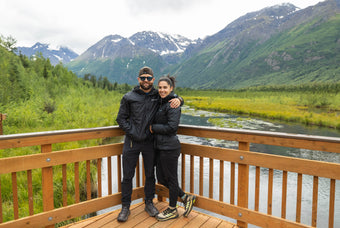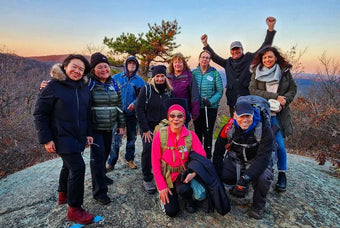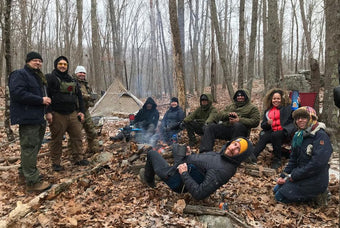Lorem ipsum dolor sit amet
10 Breathtaking Winter Trail Hikes in the USA
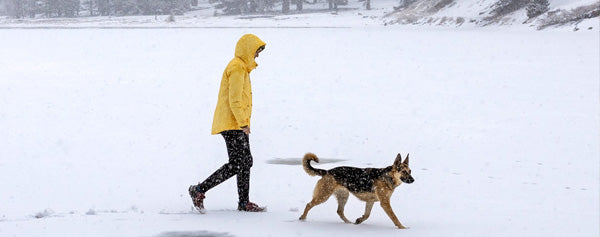
Winter transforms hiking trails into magical landscapes—snow-dusted peaks, frozen waterfalls, and quiet, crowd-free paths make for an unforgettable outdoor experience. Whether you’re a seasoned winter adventurer or looking for a scenic snow-covered stroll, we’ve rounded up 10 of the best winter hikes in the USA.
1. Skyline Trail – Mount Rainier National Park, WA
🏔 Why Hike It? This classic trail offers jaw-dropping views of Mount Rainier, especially stunning in winter when the snow blankets the meadows.
🔹 Trail Length: 5.5 miles round trip
🔹 Difficulty: Moderate
📌 Pro Tip: Snowshoes or microspikes are a must, and always check avalanche conditions before heading out.
2. Emerald Lake Trail – Rocky Mountain National Park, CO
❄️ Why Hike It? A short but rewarding hike leading to a breathtaking frozen lake surrounded by rugged, snow-covered peaks.
🔹 Trail Length: 3.2 miles round trip
🔹 Difficulty: Easy to Moderate
📌 Pro Tip: Start early for a peaceful experience and be prepared for icy patches along the way.
3. Franconia Ridge Loop – White Mountains, NH
⛰ Why Hike It? This exhilarating ridgeline trek offers unbeatable winter panoramas, but it’s no walk in the park!
🔹 Trail Length: 8.6 miles loop
🔹 Difficulty: Challenging
📌 Pro Tip: This trail is for experienced winter hikers—crampons, an ice axe, and full winter gear are recommended.
4. Angels Landing (Winter Edition) – Zion National Park, UT
🧗 Why Hike It? The famous red rock cliffs of Zion look incredible with a dusting of snow, and the winter season means fewer crowds.
🔹 Trail Length: 5.4 miles round trip
🔹 Difficulty: Strenuous
📌 Pro Tip: Traction spikes are essential, as the chains section can be icy.
5. Yosemite Falls Trail – Yosemite National Park, CA
🌊 Why Hike It? Seeing the iconic Yosemite Falls partially frozen is a winter wonder!
🔹 Trail Length: 7.2 miles round trip
🔹 Difficulty: Moderate to Strenuous
📌 Pro Tip: The mist from the falls can freeze on the trail—bring trekking poles and microspikes for stability.
6. Ice Caves Trail – Apostle Islands National Lakeshore, WI
❄️ Why Hike It? This unique trail takes you across frozen Lake Superior to explore mesmerizing ice caves.
🔹 Trail Length: Varies (conditions determine accessibility)
🔹 Difficulty: Moderate
📌 Pro Tip: The trail is only open when the lake is solidly frozen—always check park updates before attempting this hike.
7. Old Rag Mountain – Shenandoah National Park, VA
🏞 Why Hike It? A thrilling rock scramble with panoramic views over the Blue Ridge Mountains, even more beautiful in winter.
🔹 Trail Length: 9.4 miles loop
🔹 Difficulty: Strenuous
📌 Pro Tip: The rocky sections can be dangerously icy—bring microspikes and take your time on the scramble.
8. Bear Mountain Loop – Hudson Highlands, NY
🌲 Why Hike It? Just outside NYC, this trail offers stunning views of the Hudson River and surrounding snow-covered hills.
🔹 Trail Length: 4 miles loop
🔹 Difficulty: Moderate
📌 Pro Tip: A great beginner-friendly winter hike, but microspikes will help on icy sections.
9. Crater Lake Rim Trail – Crater Lake National Park, OR
🌊 Why Hike It? Crater Lake’s deep blue water contrasts beautifully with the surrounding white landscape, making for a breathtaking winter scene.
🔹 Trail Length: Varies
🔹 Difficulty: Easy to Moderate
📌 Pro Tip: Snowshoes or cross-country skis are often needed due to deep snow.
10. Avalanche Lake Trail – Glacier National Park, MT
🏔 Why Hike It? A peaceful, snow-covered trail leading to a stunning frozen lake surrounded by towering peaks.
🔹 Trail Length: 4.6 miles round trip
🔹 Difficulty: Moderate
📌 Pro Tip: Glacier National Park can get extremely cold—dress in layers and check trail conditions before heading out.
Winter Hiking Safety Tips
Before you hit the trails, here are some key tips for a safe and enjoyable winter hike:
✅ Dress in layers: A moisture-wicking base layer, an insulating mid-layer, and a waterproof outer layer are essential.
✅ Bring traction gear: Microspikes, crampons, or snowshoes can make a huge difference.
✅ Start early: Winter days are shorter, so plan to finish your hike before dark.
✅ Check weather and trail conditions: Sudden weather changes can make trails dangerous.
✅ Pack essentials: Always carry extra food, water, a headlamp, and a first aid kit.

